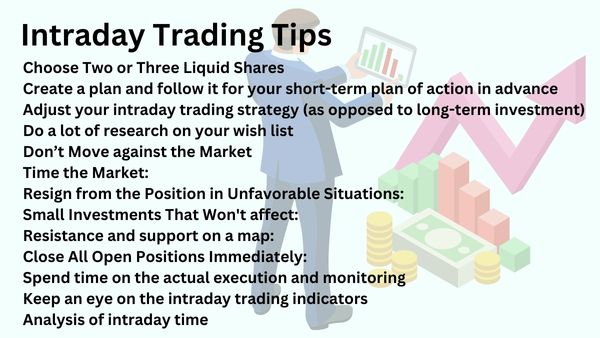What is Trend Trading? And Trend Trading Strategies

Trend trading is a popular approach among traders looking to profit from market trends. By identifying and following market trends, trend traders aim to capitalize on upward, downward, or sideways price movements.
This type of trading involves using technical analysis to identify trends, determining a suitable entry and exit point, and using risk management strategies to protect capital.
There are various trend trading strategies that traders can use, each with its own set of advantages and disadvantages. This article will provide an introduction to trend trading, including an overview of the key concepts and strategies involved.
What Is Trend Trading?
Trend trading is a trading strategy that involves identifying and following a market trend in order to make profits. In trend trading, traders look for trends in the market and buy into them, holding onto their positions as long as the trend continues. When the trend changes or reverses, they sell their positions.
Key points of Trend Trading are:
- Identifying and following market trends: Trend trading involves identifying market trends and buying into them to make profits.
- Various financial markets: Trend trading can be applied to a variety of financial markets, including stocks, currencies, and commodities.
- Based on technical analysis: Trend trading often relies on technical analysis to identify trends and make informed trading decisions.
- Capitalizing on trends: The goal of trend trading is to identify trends early and capitalize on them.
- Protecting capital: Trend traders use risk management strategies to minimize potential losses and protect their capital.
- No guarantee of profits: It is important to understand that trend trading is not a guarantee of profits and that there are inherent risks involved in any form of trading.
Trend trading can be used in a variety of financial markets, including stocks, currencies, commodities, and others. The goal of trend trading is to identify trends early and capitalize on them, as trends can provide a clear path for price movement and help traders make informed trading decisions.
Understanding Trend Trading
Trend trading is a strategy used by traders to profit from market trends. The objective of trend trading is to identify a trend in the market, buy into it, and hold onto the position as long as the trend continues. When the trend changes or reverses, the trader will sell the position.
To understand trend trading, it is important to first understand what a market trend is. A market trend is a persistent direction of price movement in a financial market. Market trends can be up, down, or sideways, and they can last for varying periods of time, from days to years.
Trend traders use technical analysis to identify trends in the market. Technical analysis involves the use of charts, indicators, and other tools to analyze market data and identify patterns that can indicate the direction of the trend. Once a trend has been identified, the trader will enter a position in the direction of the trend.
It is important for trend traders to have a solid understanding of risk management strategies. Trend trading involves holding onto positions for a period of time, and there is always the possibility of the trend reversing or changing direction. To minimize potential losses, trend traders use stop-loss orders and other risk management strategies to protect their capital.
Overall, trend trading can be a useful approach for traders looking to profit from market trends. However, like any form of trading, there are inherent risks involved, and it is important to have a solid understanding of the markets and risk management strategies before engaging in trend trading.
Trend Trading Strategies
Trend trading strategies are methods used by traders to identify and capitalize on market trends. Some common trend trading strategies include:
- Moving Average Crossover: A strategy that involves using two moving averages, one slow and one fast, to identify trend changes. When the fast moving average crosses above the slow moving average, it signals an uptrend, and when it crosses below, it signals a downtrend.
- Breakout Trading: A strategy that involves buying or selling when the price of an asset breaks through a key level of resistance or support. This strategy is used to identify and capitalize on emerging trends.
- Trend Line Trading: A strategy that involves drawing trend lines on a chart and using them to identify trend changes. When the price of an asset breaks through a trend line, it can signal a change in trend.
- Channel Trading: A strategy that involves identifying price channels, which are ranges of price movement that are bounded by parallel trend lines. When the price of an asset touches the upper or lower boundary of the channel, it can signal a trend change.
- Momentum Trading: A strategy that involves buying assets that are showing strong momentum and selling assets that are losing momentum. This strategy is used to capitalize on trends that are gaining strength.
Each trend trading strategy has its own set of advantages and disadvantages, and it is important for traders to carefully consider their goals and risk tolerance when selecting a strategy. Additionally, trend trading strategies should be used in conjunction with a solid risk management plan to minimize potential losses.
Advantages of trend trading
The following are the key advantages of trend trading:
- Potential for High Returns: By buying into a trend and holding onto the position as long as the trend continues, trend traders have the potential to generate high returns.
- Simplicity: Trend trading is a relatively straightforward approach, as it involves following established trends in the market rather than trying to predict future market movements.
- Reduced Emotional Trading: Trend trading involves a systematic approach to trading, which reduces the impact of emotions on the decision-making process. This can lead to more consistent and profitable trades.
- Better Risk Management: By using stop-loss orders and other risk management strategies, trend traders can minimize the potential for large losses.
- Easy to Implement: Trend trading strategies can be easily implemented with the use of technical analysis tools and charting software.
- Suitable for Different Time Frames: Trend trading can be applied to different time frames, from short-term intra-day trading to long-term investments, making it a versatile approach for traders with different goals and risk tolerance.
- Can Be Used in Different Markets: Trend trading can be applied to a wide range of financial markets, including stocks, bonds, currencies, commodities, and more.
While trend trading has many advantages, it is important to remember that like any form of trading, there are also inherent risks involved. It is important to carefully consider your goals and risk tolerance before engaging in trend trading, and to have a solid understanding of the markets and risk management strategies.
Drawbacks of trend trading
1. Risk of Missing Out on Big Trends: Trend trading does not always enable you to get in on the start of the trend. This means that you could potentially miss out on some of the biggest gains in the market.
2. Difficulty in Identifying Trends: It can be difficult to identify trends in the markets, especially in shorter time frames. This can make it difficult to accurately identify the right entry and exit points.
3. High Risk of Losses: Trend trading carries a high risk of losses as the markets can be volatile and unpredictable. This means that you could potentially lose money if you are not careful with your positions.
4. Time-Consuming: Trend trading can also be time-consuming as it requires you to constantly monitor the markets for potential trends. This can be difficult for traders who have other commitments and responsibilities.
- What is Trading and How does it Work?
- How To Start Trading Stocks
- What are Options Trading Strategies?
Conclusion
Ttrend trading is a strategy used by traders to profit from market trends. The objective of trend trading is to identify a trend in the market, buy into it, and hold onto the position as long as the trend continues.
To be successful, trend traders must have a solid understanding of technical analysis and risk management strategies. There are various trend trading strategies that traders can use, including Moving Average Crossover, Breakout Trading, Trend Line Trading, Channel Trading, and Momentum Trading.
Ultimately, the success of a trend trading strategy will depend on the individual trader’s goals, risk tolerance, and ability to accurately identify market trends and execute trades in a timely manner.




